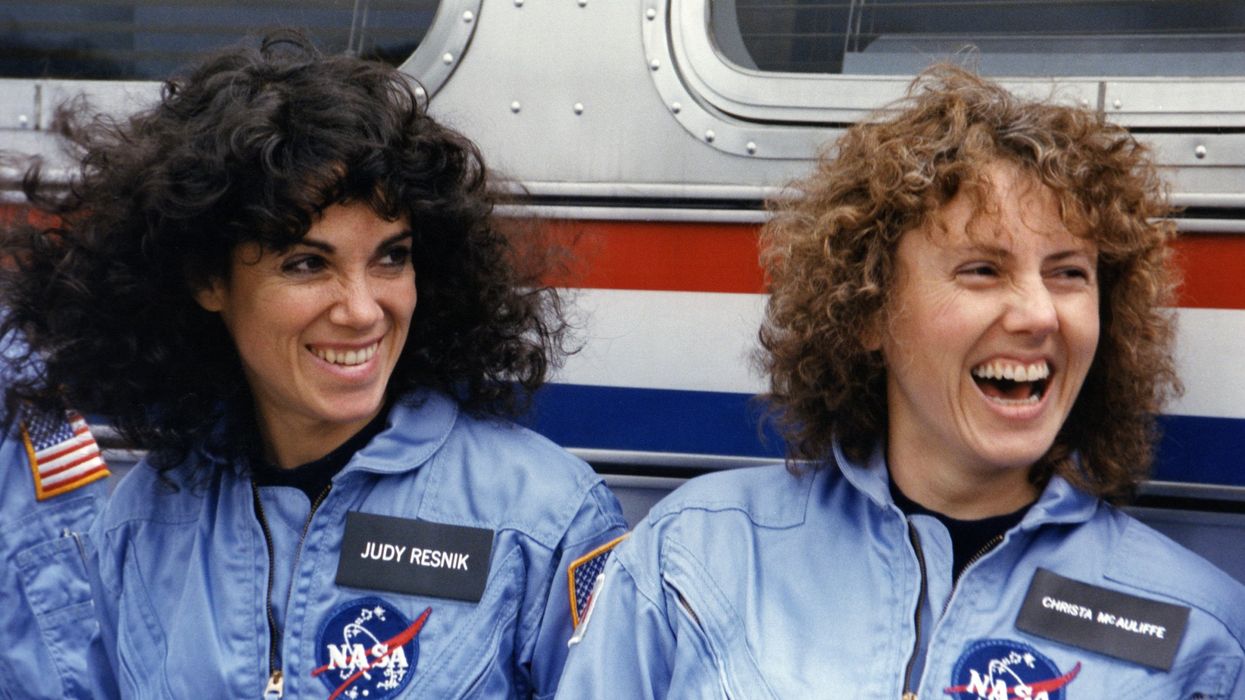Houston Author Pens Fascinating New Book ‘The Six,’ Telling the Stories of the First Female Astronauts

Judy Resnik and Christa McAuliffe before the fated Challenger flight (NASA photo scanned by J.L. Pickering)
IN 1978, THE glass ceiling at NASA shattered when Sally Ride, Judy Resnik, Anna Fisher, Kathy Sullivan, Shannon Lucid and Rhea Seddon were selected to undergo training to become America’s first women astronauts. The professional and personal history of each of these pioneering women and the gender discrimination they faced and ultimately transcended is the subject of Loren Grush’s fascinating new book The Six: The Untold Story of America’s First Women Astronauts.
Grush, a self-described “space journalist” who grew up in Friendswood right next to NASA’s Johnson Space Center in Clear Lake and whose parents were both engineers who worked on the space shuttle program, is the ideal person to tell the story of the first women to fly in space. On Wednesday, Sept. 13 at the Federal Reserve Bank, Grush will speak about The Six as a guest of the World Affairs Council of Greater Houston.

“I grew up in a community that was very close to space,” says Grush, who at the time, didn’t think what her parents did for a living was “cool,” and was more interested in storytelling, using a camcorder to create narrative videos. But as Grush began to craft a career in journalism, and friends and colleagues expressed curiosity about her unique childhood, she gained a new appreciation for the science of space travel and decided to dedicate herself to writing about space. “It’s been a fulfilling and full circle experience,” says Grush.
Throughout The Six, whether describing the intricacies of steering a high-powered T-38 jet in high altitudes, or how record-low temperatures contributed to the cause of the Space Shuttle Challenger disaster, Grush makes the science and technology of space exploration accessible to the lay reader, without the need of footnotes or a glossary of terms. “I’ve always likened myself to a translator,” says Grush regarding how engineers often speak in “code” and with an abundance of acronyms. “Sometimes it’s difficult when you’ve been in a beat for so long because you start to talk that way too. But it’s my job to explain things in a way that people will understand if they’re coming to space for the first time.”
In the years after the Apollo 11 landing, it was commonly accepted that only male military test pilots had the right stuff for space travel. But that changed in 1977 when NASA rolled out plans for a new type of space vehicle, a “space shuttle” that would make regular trips into space and back, with crews made up of people from a range of disciplines, including scientists, engineers, and doctors. After years of avoiding the issue of discrimination based on gender and race, the agency campaigned for women and people of color to apply to the program, regardless of their experience with piloting. NASA was catching up with the times. Before that, half of the women among “the six” were not focused on becoming astronauts but on careers they believed were attainable.
One reason why Grush wanted to shine a light on all six astronauts is that the first woman in space could have easily been any one of them.
“I’m fascinated by the ‘what ifs?’” says Grush. “Throughout the book, you see the lineup changes pretty drastically. We could have easily had a different first American woman in space.” (Before Ride, Soviet Cosmonaut Valentina Tereshkov was the first woman to fly in space.) The seemingly random nature behind deciding who gets to fly and when will hit home for readers with knowledge of the Challenger disaster, a doomed flight that included Resnik among the crew. “With hindsight, those decisions seem much more fateful,” says Grush.

Author Loren Grush (photo by Christopher White)

Sally Ride and Anna Fisher (NASA photo scanned by J.L. Pickering)
Coinciding with the publication of The Six is NASA’s ambitious Artemis moon exploration program which, after a lunar flyby scheduled for 2024, will put the first woman (Christina Koch) and person of color (Victor Glover) on the moon in 2025. Meanwhile, back on Earth, the scourge of gender and racial discrimination continues to rear its head, making the history Grush tells in The Six more timely than ever. But NASA’s better-late-than-never commitment to inclusivity and diversity has had a positive and profound impact beyond the space program. “Opening up these programs means you’ll find some really special people that you would have missed otherwise,” says Grush. “Once one wall comes down in a profession, you start to wonder, well, why is there a wall for others?”



